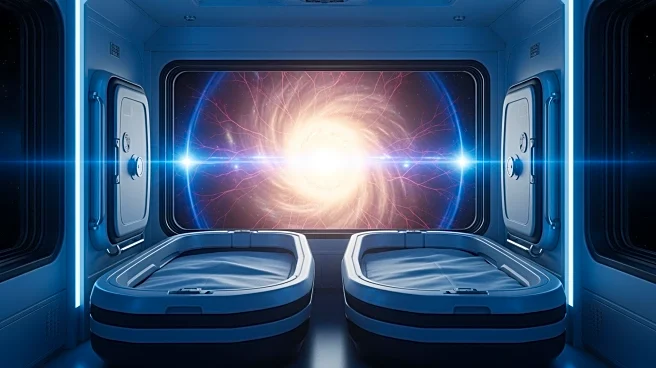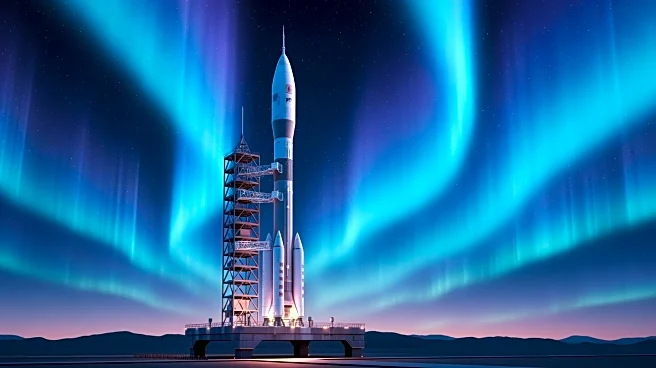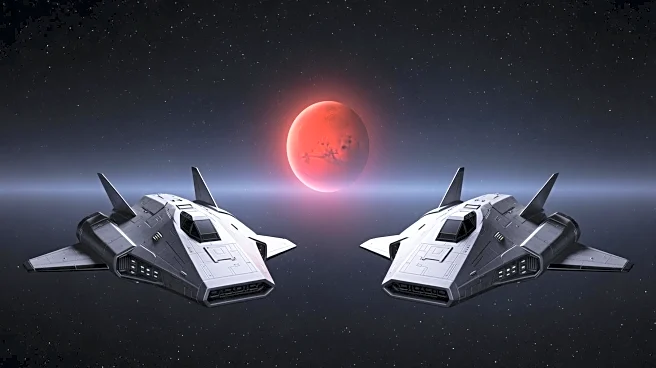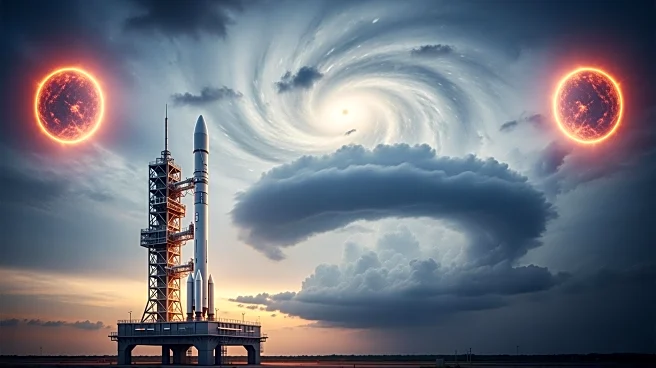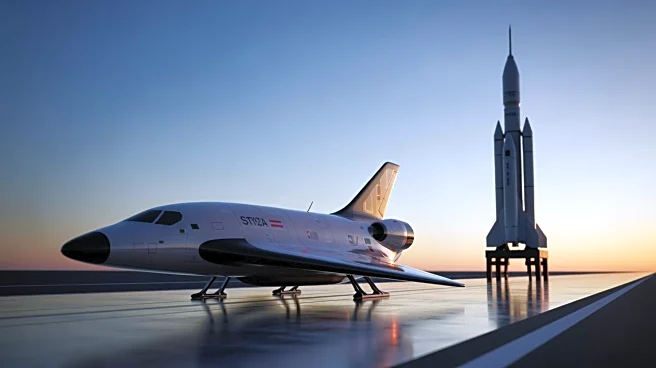What's Happening?
Astronauts aboard the International Space Station (ISS) have been forced to alter their sleeping arrangements due to the threat posed by solar particles from an extreme 'cannibal' solar storm. The storm,
characterized by a series of solar eruptions feeding off each other, has created one of the most significant solar events since 2005. As a precaution, the three Russian cosmonauts aboard the ISS were instructed to spend the night in the laboratory module. This decision was made following a communication from NASA mission control, which highlighted the increased radiation risk due to the energetic solar particle event. The storm has already caused radio blackouts in Africa and parts of Europe and delayed the launch of Blue Origin's New Glenn rocket.
Why It's Important?
The occurrence of such powerful solar storms poses significant risks to both space operations and terrestrial infrastructure. High-energy particles from these storms can interfere with satellites, disrupt navigation systems, and affect energy infrastructure on Earth. For astronauts, the radioactive ions present in the solar storm can be harmful, necessitating protective measures such as altering sleeping arrangements. The event underscores the vulnerabilities of space missions to solar activity, especially during the solar maximum phase of the Sun's 11-year cycle. Additionally, the ageing infrastructure of the ISS, particularly the Russian segment, highlights ongoing challenges in maintaining safety and operational integrity in space.
What's Next?
As the solar maximum continues, further solar storms are expected, potentially requiring additional precautions for astronauts and adjustments to space mission schedules. The ISS crew will continue to monitor radiation levels and adjust their activities accordingly. On Earth, scientists and engineers will need to assess the impact of these storms on communication and navigation systems, potentially leading to advancements in protective technologies. The ongoing solar activity may also provide opportunities for scientific research into solar phenomena and their effects on space and Earth environments.
Beyond the Headlines
The solar storm event highlights broader issues related to space exploration and the sustainability of long-term missions. The ageing infrastructure of the ISS, particularly the Russian Zvezda module, which has experienced persistent air leaks, raises concerns about the longevity and safety of current space habitats. This situation may prompt discussions on the need for new investments in space station technology and international collaboration to ensure the safety and success of future missions. Additionally, the dazzling auroras observed across various regions serve as a reminder of the beauty and complexity of space phenomena, inspiring continued interest and research in astronomy and space science.
